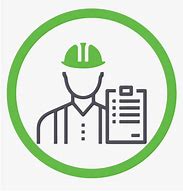Title Page
-
Address of the property where the doors are located
-
Conducted on
-
Prepared by
-
Document Number
-
Has the door got an Identification number? If not, allocate a number.
The Inspection
THE DOOR CERTIFICATION
-
Location of the certification label of plug
-
This can usually be found on the top edge of the door
-
Locate certification documents - do the components on the door match precisely those listed in the documents?
-
FD rating of the door
-
CF number if visble
GAPS & SEALS
-
Is the gap between the door and the frame the correct size
-
The gaps should measure between 2mm and 4 mm at the top and sides of the door.
-
Is the gap under the door the correct size
-
The gap should be no more than 10mm between the door and the floor. If the door is in an HMO the gap must not exceed 3mm.
-
Are the intumescent seals fitted around the door or frame present and in good condition
-
The seal must be of the correct type for the door rating. Kitchen doors and entrance doors must have a cold smoke seal. All doors in an HMO must have a cold smoke seal.
HINGES & IRONMONGERY
-
Are there at least 3 hinges of securely fitted hinges
-
All screws should be intact and of the same size.
-
Does each hinge have a CE mark and a fire identification stamp such as a Certifire mark?
-
Does the fire rating of the hinge, lock, and handle match the rating of the door?
-
Are the hinges and ironmongery free from visible damage? Check for dents and missing screws
-
The hinge, door leaf, frame and all components of the fire door set have the same fire rating.
DOOR CLOSER
-
Is the door closer in good condition with a CE mark?
-
Check for signs of damage or disengagement.
-
Does the closer shut and latch the door closed from any position?
-
The closer should close the door completely within 25 seconds from any position
DOOR & DOOR FRAME
-
Is the door free from visible damage?
-
Check for holes or dents.
-
Is the frame free from visible damage?
-
Check for dents or missing pieces.
-
Have ventilation grilles, door furniture, or vision panels been added in line with manufacturer instructions?
-
Modifying the door set in any way could invalidate your certification.
SIGNAGE
-
Does the fir door have the correct signage fitted?
-
The fire door should be marked. Signage may be required on both sides of the door and should be in accordance with BS5499.
HOLD OPEN DEVICES e.g. Retainers
-
Does the hold-open device allow the door to close when the alarm sounds?
-
Fire doors should never be tied, propped or wedged open. If evidence of this is found, it should be addressed through user education and by fitting a legal device like a fire door retainer.
CATEGORISATION
IN THE OPINION OF THE INSPECTOR
-
Is the door of the following category
-
Compliant
-
Non compliant
-
A Nominal door
-
According to a fire door inspector, a nominal fire door is a timber-based door providing a fire door resistance performance for a specified period of time. However, they are not the same as certified fire doors which have undergone fire door resistance performance tests to give an indication of fire performance and determine their fire door rating. The performance of the door is simply relied upon by the fire door inspector’s opinion.
-
A Notional door
-
According to advice from the UK government, a notional fire door is a fire door that satisfies the standards applicable to fire door resistance at the time of construction. Therefore, these types of doors are not the most up-to-date with the latest codes, regulations and tests, may not have been fitted with intumescent strips and smoke seals, and may not even be constructed correctly.
Inspectors signature
-
Add signature








